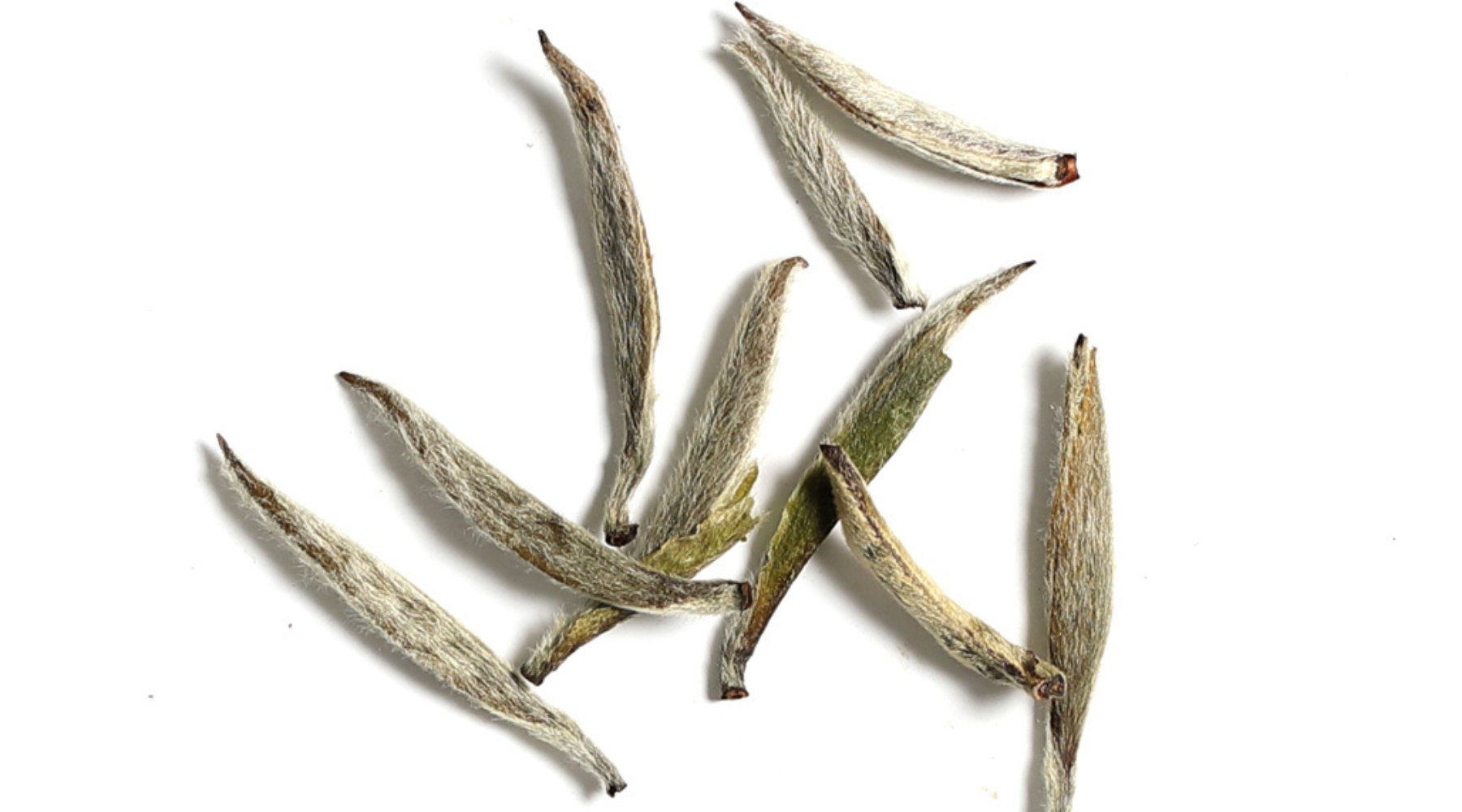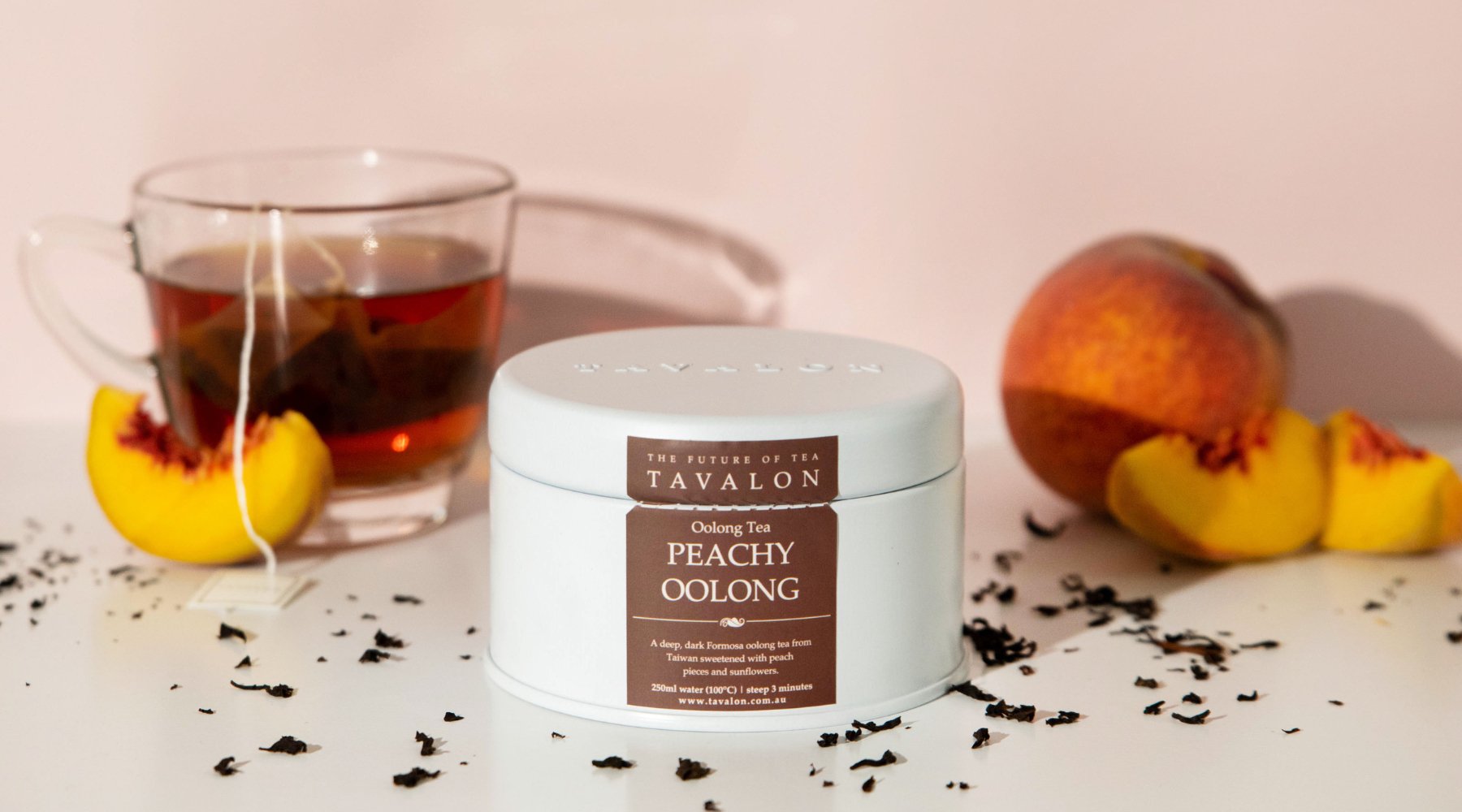
The Health Benefits of White Tea: A Comprehensive Guide
White tea, known for its delicate flavour and light colour, has gained popularity in recent years due to its numerous health benefits. In this comprehensive guide, we will explore the origins and processing of white tea, its nutritional profile, and its potential impact on our health.
Additionally, we will compare white tea to other popular teas and discuss brewing techniques, potential side effects, and finally, provide a conclusion on the health benefits of white tea.
Recommended: Explore Tavalon's premium white teas by tapping here!
What Is White Tea?
White tea, unlike green or black tea, is made from the young leaves and buds of the Camellia sinensis plant. It originated in China and has a long history dating back to the Tang Dynasty.
White tea goes through minimal processing, which helps retain its delicate flavour and high concentration of antioxidants. The production of white tea involves extensive handpicking and careful drying to preserve its unique characteristics.
The Origin and History of White Tea

The origins of white tea can be traced back to the Fujian province of China, where the tea leaves were first cultivated. White tea's name comes from the fine white hairs that cover the young buds, giving them a silvery appearance.
Historically, white tea was reserved for the imperial court in China and considered a rare and valuable commodity. However, in recent years, its popularity and availability have increased globally.
During the Tang Dynasty, white tea was highly famous for its medicinal properties, often serving as a remedy for various ailments. It was believed to have cooling properties and was used to treat fevers, detoxify the body, and improve overall health. The delicate flavour and subtle aroma of white tea made it a favourite among the nobility, who enjoyed its refreshing taste and the sense of tranquillity it brought.
As white tea gained popularity, it began to be exported to other countries. This spread its influence, making it a sought-after beverage worldwide. Today, white tea is enjoyed by tea lovers around the globe. Many appreciate its unique flavour profile and the sense of calm and the many other benefits white tea provides.
How Is White Tea Processed?
The processing of white tea involves minimal oxidation and no fermentation. After tea farmers carefully pick the leaves and buds, they leave them to wither under the sun or in controlled indoor environments. This withering process reduces the water content and enhances the natural flavours present in the tea.
Next, the leaves are lightly oxidised, typically for a short period of time, and then dried to minimise any further changes in flavour and appearance. The result is a tea with a delicate aroma, subtle flavour, and a pale liquor.
Handpicking is an essential part of the white tea production process. Skilled tea pickers carefully select the young leaves and buds, using only the finest and most tender parts of the plant. This meticulous selection process guarantees that the tea will have a smooth and delicate taste.
After picking, the leaves are spread out on bamboo trays or racks to wither. This step allows the leaves to lose some of their moisture and become pliable. The withering process can take several hours or even days, depending on the desired flavour profile. During this time, the leaves undergo chemical changes that contribute to the unique taste and aroma of white tea.
After withering, the leaves go through light oxidisation. This step is crucial in developing the flavour of the tea. Unlike black tea, which undergoes extensive oxidation, white tea goes through only light oxidisation. This allows the tea to retain its delicate and subtle taste. The oxidation process is carefully controlled to prevent the tea from becoming too bitter or losing its natural flavours.
Finally, the leaves are dried to halt the oxidation process and preserve the tea's flavour and appearance. Traditionally, white tea leaves were sun-dried, which added a distinct character to the tea. However, modern production methods often involve using temperature-controlled drying rooms to ensure consistency and quality. The drying process removes any remaining moisture from the leaves, resulting in a tea that can be stored for extended periods without losing its freshness.
Nutritional Profile of White Tea
In addition to its refreshing taste, white tea offers a range of nutrients and antioxidants that can support overall health and well-being. The specific nutrient content may vary depending on the type and quality of the tea. However, white tea generally contains polyphenols, catechins, and various vitamins and minerals.
One of the key nutrients found in white tea is polyphenols. These plant compounds have been extensively studied for their potential health benefits. White tea is particularly rich in a specific type of polyphenol: epigallocatechin gallate (EGCG). EGCG is known for its potent antioxidant properties,; it can help protect the body against oxidative stress and reduce the risk of chronic diseases.
Key Nutrients in White Tea
White tea contains a diverse array of beneficial compounds, including polyphenols such as epigallocatechin gallate (EGCG), which is famous for its potent antioxidant properties. EGCG has been linked to various health benefits, including boosting the immune system, promoting cardiovascular health, and supporting weight loss. Additionally, white tea contains flavonoids, which have anti-inflammatory effects and contribute to the tea's pleasant taste.
Aside from polyphenols and flavonoids, white tea also contains trace amounts of vitamins and minerals that can contribute to overall health. These include vitamin C, vitamin E, manganese, and potassium. While the amounts may be small, every little bit adds up and can contribute to a well-rounded diet.
Antioxidant Properties of White Tea
One of the main reasons white tea is celebrated for its health benefits is its remarkable antioxidant content. Antioxidants help protect the body against oxidative stress caused by free radicals, which are unstable molecules that can damage cells and contribute to ageing and disease. Studies have shown that white tea exhibits potent antioxidant activity, which can help reduce the risk of chronic conditions such as heart disease, cancer, and neurodegenerative disorders.
In addition to EGCG, white tea contains other antioxidants such as catechins. These antioxidants work together to scavenge free radicals and neutralise their harmful effects. That's why by adding white tea into your daily routine, you can give your body an extra boost of protection against oxidative damage.
Furthermore, the antioxidant properties of white tea may have anti-aging effects. Oxidative stress seems to be one of the causes contributing to the ageing process, causing wrinkles, fine lines, and other signs of ageing. By consuming white tea regularly, you may be able to slow down the ageing process and maintain a youthful appearance.
It's important to note that while white tea offers many potential health benefits, it is not a cure-all or substitute for a balanced diet and healthy lifestyle. Consuming white tea while maintaining a well-rounded diet can be a great addition to your overall wellness routine and may provide additional health benefits.
Health Benefits of White Tea

White tea comes with several health benefits due to its unique composition of bioactive compounds. Let's explore some of the potential advantages it may offer.
Boosting the Immune System
The immune-boosting properties of white tea can be thanks to its high levels of antioxidants, particularly EGCG. These compounds can help strengthen the immune system, making it more resilient against common infections and diseases. Additionally, white tea's anti-inflammatory properties may help reduce inflammation and support overall immune function.
Furthermore, studies have shown that white tea contains polyphenols, which have antimicrobial properties. These compounds can help fight off harmful bacteria and viruses, further enhancing the immune system's ability to protect the body.
Enhancing Heart Health
White tea has been shown to promote heart health by reducing the risk of cardiovascular diseases. The antioxidants present in white tea can help lower bad cholesterol levels, decrease blood pressure, and improve blood vessel function. These effects may help reduce the risk of heart disease, stroke, and other cardiovascular conditions.
In addition to its antioxidant properties, white tea contains flavonoids, which, according to some studies, have a positive impact on heart health. Flavonoids can help improve blood flow, prevent blood clot formation, and reduce inflammation in the arteries, all of which contribute to a healthier cardiovascular system.
Aiding Weight Loss
White tea has gained attention for its potential to assist with weight management. The catechins found in white tea can help boost metabolism and promote fat oxidation, potentially aiding in weight loss. Additionally, white tea is naturally low in calories and can be a wholesome alternative to sugary beverages, making it a suitable choice for those seeking to shed excess pounds.
Moreover, white tea contains theanine, an amino acid that has a calming effect on the mind and body. This can help reduce stress levels, which often come from emotional eating and weight gain. By promoting relaxation, white tea may indirectly support weight loss efforts.
Improving Skin Health
Due to its high concentration of antioxidants, white tea may benefit the appearance and health of the skin. The antioxidants help protect the skin from damage caused by free radicals, reducing the signs of ageing such as wrinkles, fine lines, and age spots. Regular consumption of white tea may also help improve skin elasticity and promote a healthy complexion.
In addition to its antioxidant properties, white tea contains vitamins such as vitamin E and vitamin C, which are essential for maintaining healthy skin. These vitamins play a crucial role in collagen synthesis, a process that helps keep the skin firm and supple. By providing these essential nutrients, white tea can contribute to overall skin health.
Furthermore, the anti-inflammatory properties of white tea can help soothe skin irritations and reduce redness. This makes it a suitable natural remedy for conditions such as acne, eczema, and rosacea.
Various Types of White Tea
White tea comes in several varieties, each with its unique characteristics and flavours. Let's explore some of the most popular types of white tea:
Silver Needle White Tea

Silver Needle, also known as Bai Hao Yin Zhen, is the most prized and revered white tea variety. It consists of only the buds, which are covered in downy silver hairs. Silver Needle white tea is famous for its delicate and sweet flavour, with notes of honey and melon.
White Peony Tea
White Peony, or Bai Mu Dan or Pai Mu Tan, is another well-known white tea variety. It is made from the young leaves and unopened buds of the tea plant. White Peony tea has a slightly stronger flavour compared to Silver Needle tea, with hints of floral and fruity notes.
Long Life Eyebrow White Tea
Long Life Eyebrow, or Shou Mei, is a white tea that consists of leaves and buds. This type of white tea undergoes slightly more oxidation during processing, resulting in a darker appearance and a bolder flavour. Long Life Eyebrow white tea has a nutty and slightly earthy taste, with subtle sweetness.
Comparing White Tea with Other Teas
White tea, green tea, and black tea all originate from the Camellia sinensis plant, but they differ in their production methods and flavour profiles. Understanding these differences can help tea enthusiasts appreciate the unique qualities of each type.
White Tea vs Green Tea
Green tea and white tea share a similarity in that they both undergo minimal oxidation. However, the production process for green tea involves steaming or pan-frying the leaves after withering to stop oxidation. This additional step gives green tea a vibrant green colour and a slightly grassy flavour. In contrast, white tea is simply withered and dried, resulting in a milder taste and a pale, almost silver-like appearance.
When it comes to health benefits, both green tea and white tea offer antioxidant properties. However, the specific antioxidants present in each tea may vary due to their different processing methods. Green tea is known for its high levels of catechins, particularly epigallocatechin gallate (EGCG), which has been linked to various health benefits, including improved heart health and potential cancer-fighting properties. On the other hand, white tea contains a unique blend of antioxidants, such as polyphenols and flavonoids, which may contribute to its own set of health advantages.
White Tea vs Black Tea
While white tea and black tea share the same origin, their production processes take them in completely different directions. Unlike white tea, black tea undergoes full oxidation before drying. This oxidation process gives black tea its distinct bold flavour and dark colour. The leaves are rolled and exposed to oxygen, allowing enzymes to convert polyphenols into theaflavins and thearubigins, which contribute to the rich taste and deep hue of black tea.
In terms of health benefits, black tea offers its own unique set of compounds. While it contains fewer catechins and antioxidants compared to white and green teas, black tea is rich in theaflavins and thearubigins. These compounds have been associated with potential cardiovascular benefits, such as reducing the risk of heart disease and improving cholesterol levels. Additionally, black tea contains caffeine, which can provide a natural energy boost.
On the other hand, white tea is favoured for its delicate and subtle flavours. It has a light and refreshing taste, with hints of floral and fruity notes. The minimal processing of white tea allows its natural flavours to shine through, making it a popular choice for those who prefer a more nuanced tea-drinking experience.
How to Brew and Enjoy White Tea
To fully savour the flavours and benefits of white tea, it is crucial to follow proper brewing techniques and select high-quality tea leaves.
Selecting High-Quality Tea
When purchasing white tea, look for loose-leaf varieties rather than tea bags, as they generally offer better quality and flavour. High-quality white tea should consist of young tea buds and have a fresh, subtly sweet aroma. Avoid teas that have any signs of discoloration or a stale scent, as these may indicate inferior quality.
Brewing Techniques for White Tea
To brew white tea, start by heating water to around 80-85°C. Pour the hot water over the tea leaves in a teapot or mug and allow them to steep for about 2-3 minutes. This short steeping time helps preserve the delicate flavours and prevent any bitterness. As white tea leaves are generally larger, you may need to adjust the amount of tea used according to your preference. Experiment with different steeping times and tea-to-water ratios to find your perfect cup of white tea.
Potential Side Effects of White Tea
While white tea is generally safe and well-tolerated, it is essential to be aware of its potential side effects, especially for those with specific health conditions.
Caffeine Content in White Tea
White tea contains caffeine, albeit in smaller quantities compared to black or green tea. A cup of white tea typically contains around 15-30 milligrams of caffeine, which is significantly less than a cup of coffee. However, individuals sensitive to caffeine or those who need to limit their intake should exercise moderation when consuming white tea.
Possible Allergic Reactions
While rare, some individuals may experience allergic reactions to white tea. These reactions can range from mild symptoms such as skin rash or itching to more severe allergic responses. If you have known allergies to tea or any related substances, it is advisable to consult with a healthcare professional before incorporating white tea into your daily routine.
Final Words
White tea, with its delicate flavour and array of potential health benefits, offers a refreshing alternative to other tea options. Its high antioxidant content, coupled with its potential to boost the immune system, promote heart health, aid in weight loss, and improve skin health, makes white tea a valuable addition to a balanced lifestyle. However, as with any dietary choice, it is important to enjoy white tea in moderation and consider any personal factors or potential allergies.




Leave a comment
This site is protected by hCaptcha and the hCaptcha Privacy Policy and Terms of Service apply.